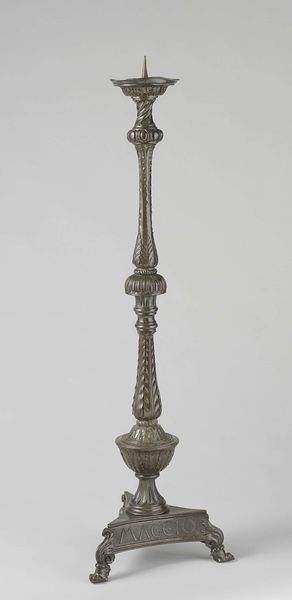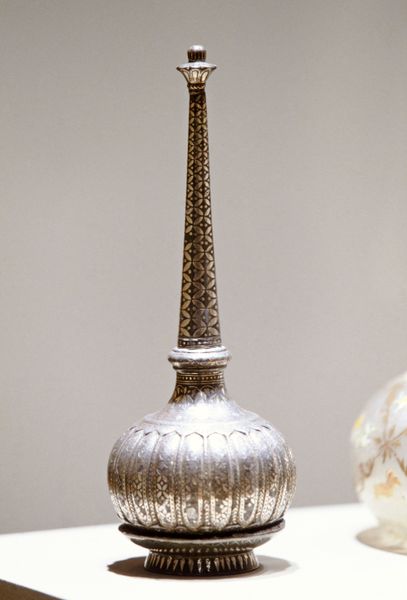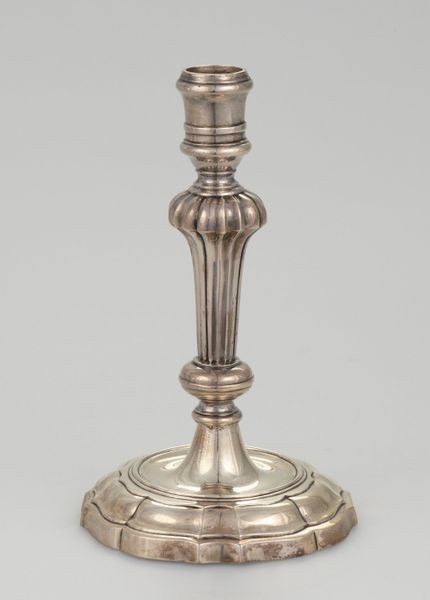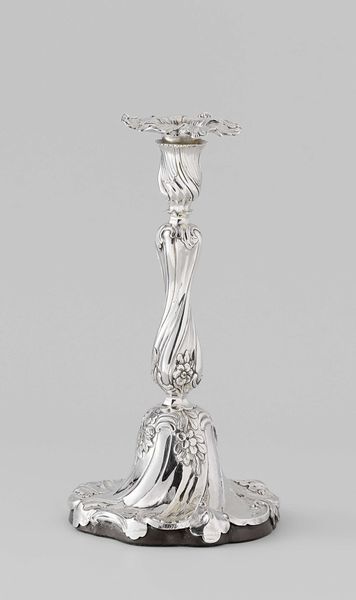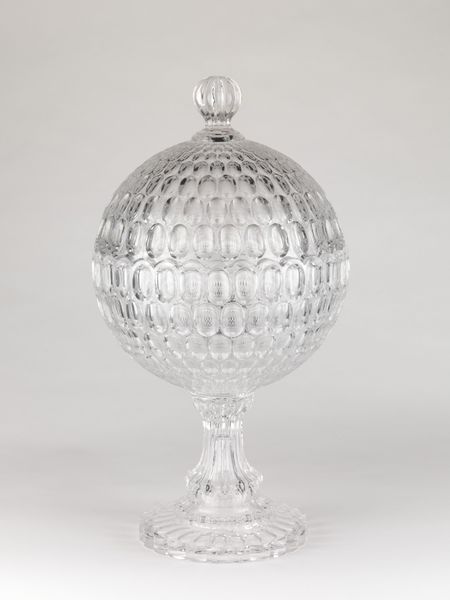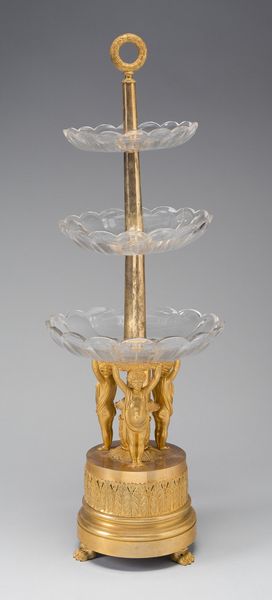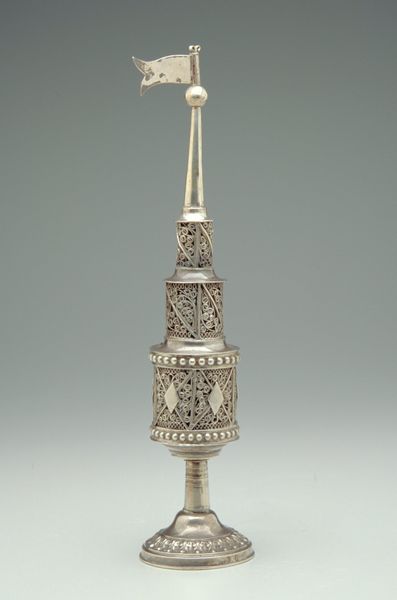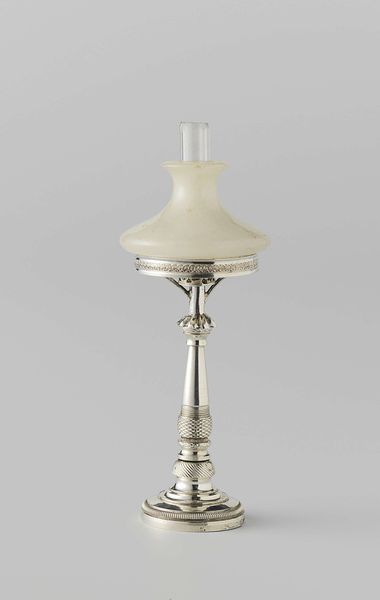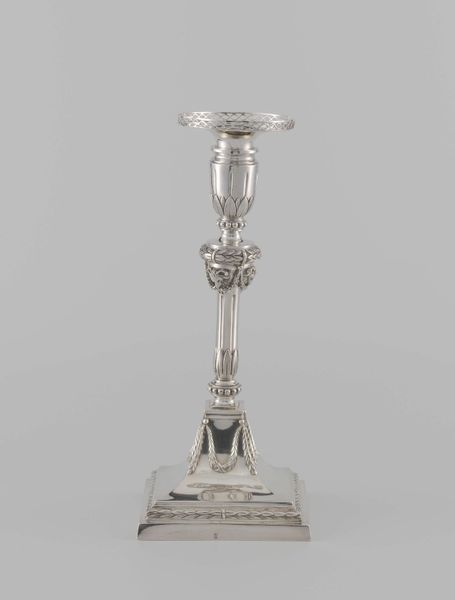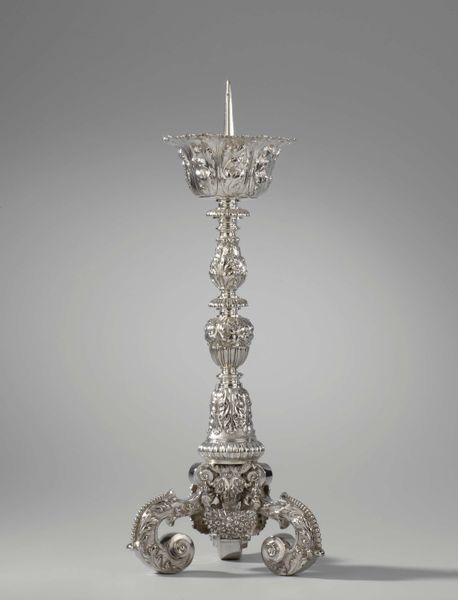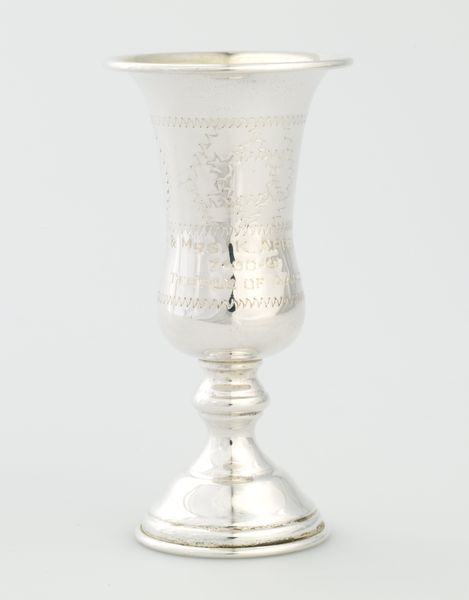
silver, metal, sculpture
#
silver
#
metal
#
sculpture
#
decorative-art
Dimensions: 7 15/16 × 2 5/8 × 2 5/8 in. (20.16 × 6.67 × 6.67 cm)
Copyright: Public Domain
Editor: So this is a silver spice box, dating from around 1800. I find the pineapple form intriguing—it seems quite ornamental for something meant to hold spices. What do you make of its design? Curator: The design speaks volumes about global trade and social status. The pineapple motif, especially, reveals a fascinating story of consumption. In the 18th and 19th centuries, pineapples were luxury items, incredibly difficult to import to Europe and the Americas. The form replicated here, through the silversmith's craft, elevates the spice box from a purely utilitarian object to a symbol of wealth and global reach. Editor: That's fascinating. So, it’s not just about storing spices but making a statement? How does the material itself – silver – contribute to that? Curator: Absolutely. Silver, like the pineapple, had connotations of wealth and status. The labor-intensive process of silversmithing, the skill required to shape and decorate it—all these factors contribute to the object's value. Also, consider who might have owned it. It's probable this belonged to a family with significant disposable income. Editor: Right, and owning this piece signaled certain status, I understand. What’s the connection between spice trade and colonialism? Curator: The spice trade was deeply interwoven with European colonialism. The desire for spices fueled exploration and exploitation across the globe. By possessing a spice box like this, someone was indirectly participating in, and benefiting from, that global network. The spice box becomes an emblem of colonial power dynamics expressed through a consumer good. Editor: It makes me realize that even everyday objects can be deeply connected to much larger systems of production and power. Curator: Exactly. By focusing on materials, process and social context, we can unearth the complex layers embedded within even the most seemingly decorative piece. Editor: I will never look at silver in the same way again! Curator: I hope this analysis can invite visitors to question their everyday materials.
Comments
minneapolisinstituteofart almost 2 years ago
⋮
Havdalah is a Jewish religious ceremony that marks the symbolic end of Shabbat and the beginning of a new week. Fragrant spices used in the ritual are kept in a special box, often beautifully fashioned from silver. Whereas Ashkenazic Jews used myrtle for Havdalah, nutmeg is also documented in Italy for this purpose. Jews in Rome often follow a local tradition of using rosemary. This example was designed by Giovacchino Belli, the most celebrated Roman silversmith of his age, who worked for the Pope and wealthy noble families in the early 19th century. With architectural elements derived from classical antiquity, and the pierced pine cone adapted from Dionysian iconography of ancient Greece and Rome, Belli's Spice box follows the most advanced fashion of the neo-classical period.
Join the conversation
Join millions of artists and users on Artera today and experience the ultimate creative platform.
